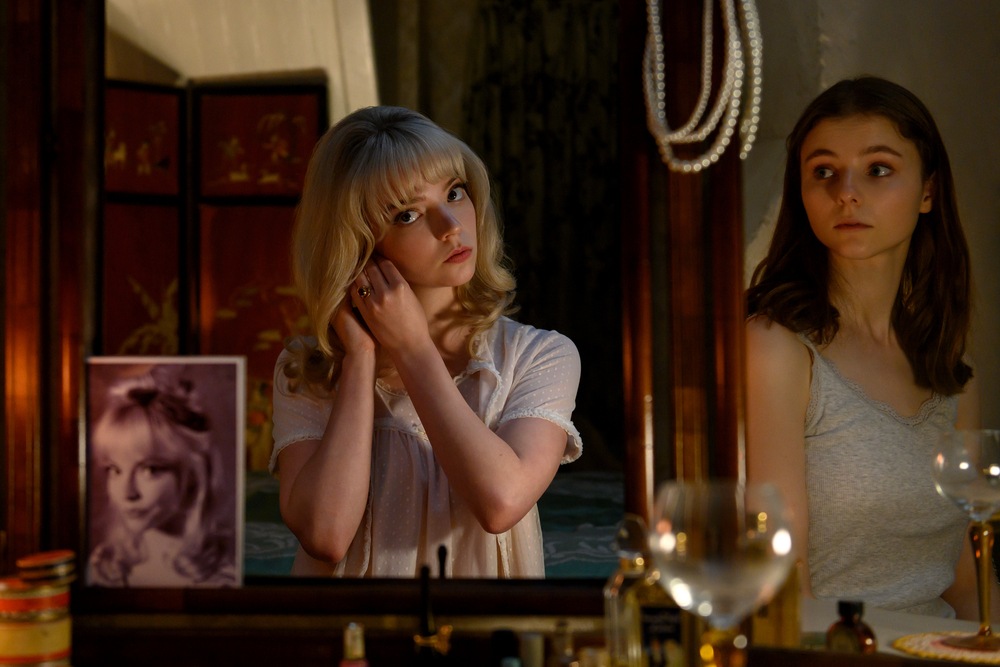Last Night in Soho

Anya Taylor-Joy and Thomasin McKenzie star in LAST NIGHT IN SOHO. (Photo: Focus Features)
Lavishly draped in nostalgic excess, Last Night in Soho playfully mixes genres with style and attitude to spare.
Although it relies too heavily on horror staples in the end, this inventive thriller from British director Edgar Wright (Shaun of the Dead) seamlessly mixes fantasy and reality as it transitions from a breezy wish-fulfillment fantasy into a dark and disturbing odyssey of mental illness and ghosts from the past.
“It’s not what you imagine. You’ve got to look out for yourself,” warns a grandmother (Rita Tushingham) to Eloise (Thomasin McKenzie), an aspiring fashion designer set to enroll at a prestigious London academy.
The timid Eloise quickly realizes she’s not a fit with her roommates, so she moves off-campus and rents an upstairs room from a protective landlady (the late Diana Rigg) with longstanding ties to the Soho neighborhood, for better or worse.
Still haunted by visions of her late mother, Eloise becomes trapped in a surreal cycle of nightmares and delusions that take her back to the glitzy 1960s art scene, transposing her into the story of a sultry lounge singer (Anya Taylor-Joy) whose road to stardom isn’t as glamorous as it first appears.
As her visions become gradually more haunting, Eloise tries to find stability by working at a local pub and deepening her friendship with a supportive classmate (Michael Ajao).
Last Night in Soho starts as an offbeat coming-of-age saga about empowerment and self-discovery, energized by its eccentric periphery characters and a killer vintage soundtrack. But those thinking Wright has sacrificed his usual acerbic edge are mistaken.
McKenzie (Jojo Rabbit) makes an appealing tour guide through the unusual happenings both inside and around her, with an expressive performance that conveys Eloise’s naivete and resilience.
The titular setting is a pivotal character, too, depicted in a visually striking color palette that renders it both alluring and harrowing.
The screenplay by Wright and Krysty Wilson-Cairns (1917) tends to trivialize Eloise’s underlying affliction by turning it into a plot device, which diminishes the visceral impact.
The film nearly comes apart in the over-the-top final act, which relies too heavily on jump scares and clumsy reveals. Much of the tension is compromised in the process.
However, while it stumbles in its attempts at broader thematic depth, this frequently dazzling journey mostly offsets its flaws with ambition and artistry.
Rated R, 116 minutes.